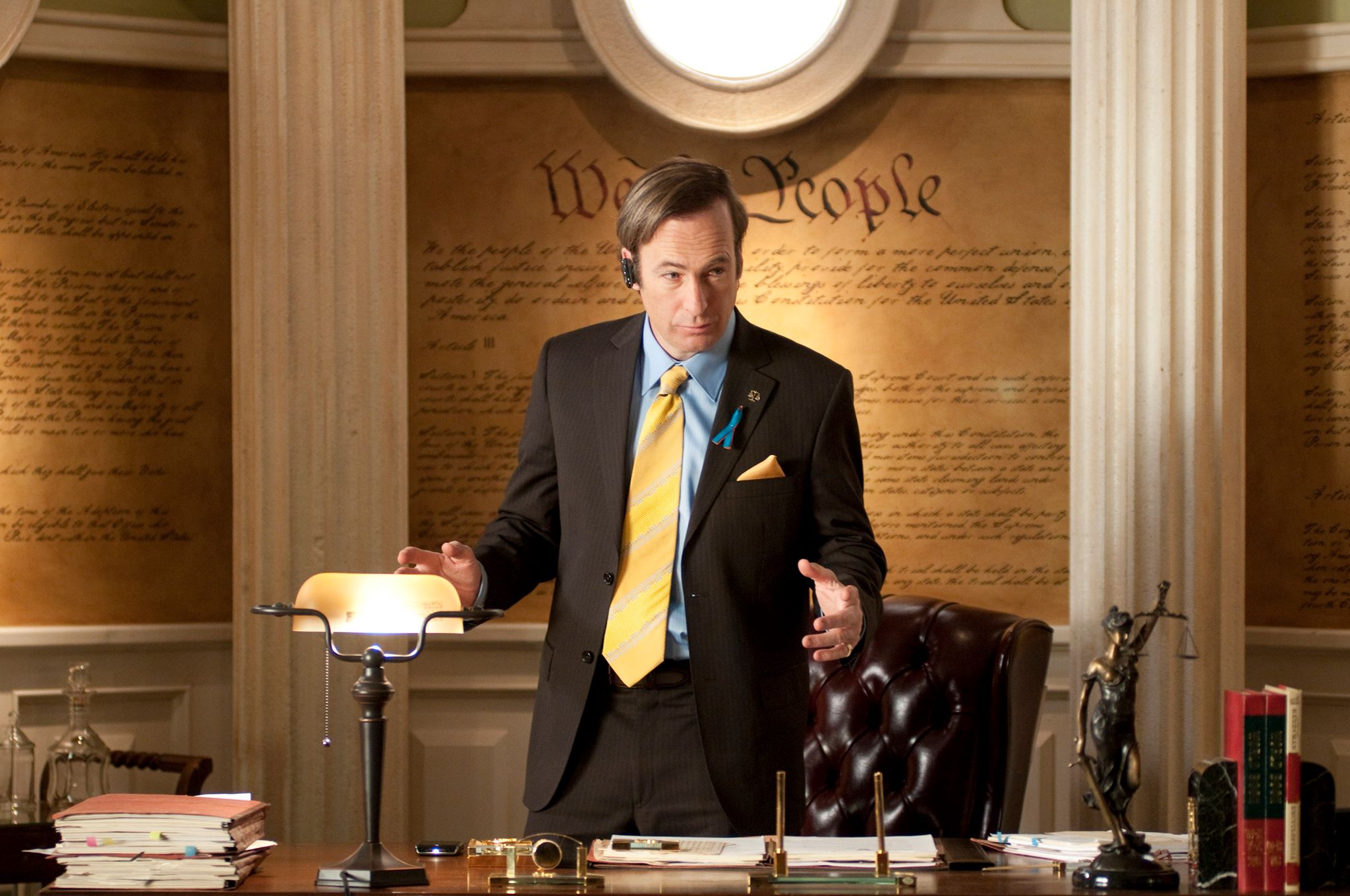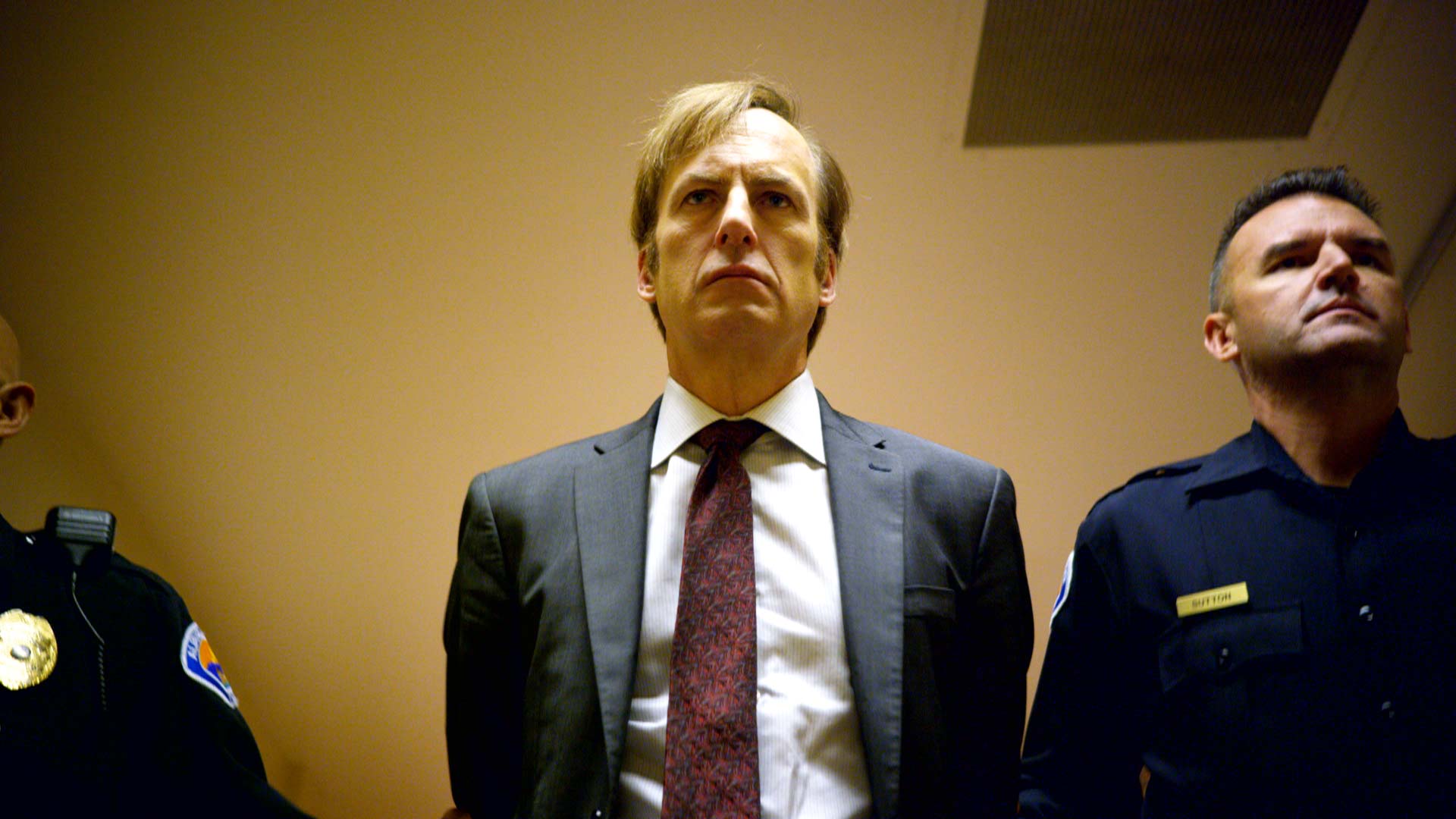In its first three seasons, and with a fourth having just begun, “Better Call Saul” has accomplished a feat thought unimaginable when its inception was first announced; it is the rare spinoff to have outgrown its predecessor, “Breaking Bad.” This isn’t to say that either eclipses the other, but rather that “Better Call Saul” doesn’t need to lean too heavily on its ultra-popular source material to be a fascinating, gripping hour of television. It stands on its own two feet.
“Breaking Bad” managed to grasp the spirit of its own place in American culture. It was a study of late aughts, southwestern, middle-class ennui in the wake of massive economic devastation. The way the heat swelled and the Albuquerque sun buzzed in that show became a signifier of a time and place in history; the show captured such a distinct feeling of life’s monotony and hopelessness, then corrupted that bored cycle with something exciting and destructive. It was suburbia gone wrong, an indictment of the systems in place as they’re known.
“Better Call Saul” borrows many thematic elements from “Breaking Bad” but engineers them into a fresh story. In “Breaking Bad,” seemingly good people are twisted by desperate times and the measures they take to fight back throw them into a dark tale of chaos and greed. “Better Call Saul” shifts this narrative by focusing on the inbetweeners: the characters who had a little bit of badness in them to begin with.
The spinoff series meditates on the idea of a slowly evolving identity. How did con man Jimmy McGill become criminal lawyer Saul Goodman, and how did Saul Goodman become Gene Takovic, the poor sod from post-“Breaking Bad” flash-forwards? The decision to portray the character over the course of three different timelines is a lesson in restraint from the showrunners. They’ve also chosen the right person to lead the spinoff, as Jimmy reveals himself to be even more complicated and intriguing than you’d expect.

The shift in identity isn’t just a matter of changing names. It’s a process, and it’s one that the show has navigated expertly. I’d be remiss not to laud star Bob Odenkirk, who reprises and digs deeper into his “Breaking Bad” role. His comedic history as creator of “Mr. Show” and as a former “SNL” writer gives him the chops to lead a drama playing a quick-witted protagonist. There are real laughs in every episode thanks to Odenkirk’s fast-talking-and-thinking performance.
The show focuses on Jimmy McGill as he takes shortcuts and dark alleys on his way to becoming a lawyer — and Saul Goodman. Those in his life who disapprove of that route are often the ones most impacted by it: his girlfriend Kim Wexler, portrayed with intelligence and measure by Rhea Seehorn; his brother Chuck McGill, played by Michael McKean, who seriously deserves an Emmy; and Patrick Fabian’s square Howard Hamlin, an associate of Jimmy’s.
With Chuck, who is Saul’s older brother and oldest foe, the “Saul” crew has succeeded at crafting one of the most compelling and tumultuous sibling dynamics on screen in many years. “Breaking Bad” echoed this struggle in its portrayal of Walter and Jesse’s father/son-like relationship, which Walt often manipulated to his advantage. Chuck plays the unforgiving father figure here, with little brother Jimmy trying to prove himself in increasingly dire ways. “In the end, you are going to hurt everyone around you,” Chuck cruelly tells Jimmy in season three. “You can’t help it. So stop apologizing and accept it. Embrace it.”
https://www.instagram.com/p/BmCDm05BOXf/?taken-by=bettercallsaulamc
As absorbing as he might be, Jimmy’s story isn’t the only one getting screen time. Many will be pleased to see Jonathan Banks in second billing as Mike Ehrmantraut, the grandfather and disgraced former police officer who moonlights as a hitman for people such as, oh I don’t know, Gustavo Fring. Giancarlo Esposito was born to play Fring, one of the best TV villains in recent memory. Viewers are also introduced to drug mover and Salamanca associate Nacho Varga, played by series newcomer Michael Mando.
Make no mistake: Characters from “Breaking Bad” who reprise their roles in “Better Call Saul” aren’t just little Easter eggs. They’re there because they have the depth to exist at different periods within the same universe. The creators have done a tremendous job in balancing character arcs between the “Saul” timeline and the “Breaking Bad” timeline; the character development is steady, but never stagnant.
https://twitter.com/shatterfront/status/1032004559164456961
This is why “Better Call Saul” can afford to be a show about the drama of life itself. Much of the conflict in the show is that which stirs up in mundanity, and each episode is a reminder that problems that don’t have to be extraordinary to swallow people whole. There’s no need to fabricate heavy drama; it simply unravels of its own fruition, and the stunning performances from a fantastic cast play no small part in this.
Each season of the show starts with a stunning black and white flash-forward sequence of Saul in the post-“Breaking Bad” timeline, where he’s been placed in the Witness Protection Program as a man by the name of Gene Takovic. Gene is the manager of a Cinnabon store in an Omaha mall. These sequences are a reminder of the end game: How does Jimmy become Saul become Gene? What will eventually become of Gene? And what will happen to all of the beloved supporting characters who are such an integral part of “Better Call Saul” but were nowhere to be found in “Breaking Bad?”
All of these questions come back to Jimmy and how his choices determine his fate and that of those around him. He’s got drive without any breaks, like a rocket ship with no controller, just bursting through the sky without a landing pad in mind. He doesn’t think about collateral damage until he’s falling back to earth, yet you can’t help but admire him: He always gets back up in hope of landing somewhere fantastic one day.
“Better Call Saul” moves slowly because it finds importance in the minutiae of everyday, using these details to stress the slow-paced nature of people’s interactions, movements and possessions. The camera lingers. It dwells. It rests. And with each beat that passes a feeling is born and persists, and this sort of lethargic pace matches the intense heat exhaustion that “Breaking Bad” nailed all those years ago. “Better Call Saul” isn’t just a little good; s’all good, man.

















